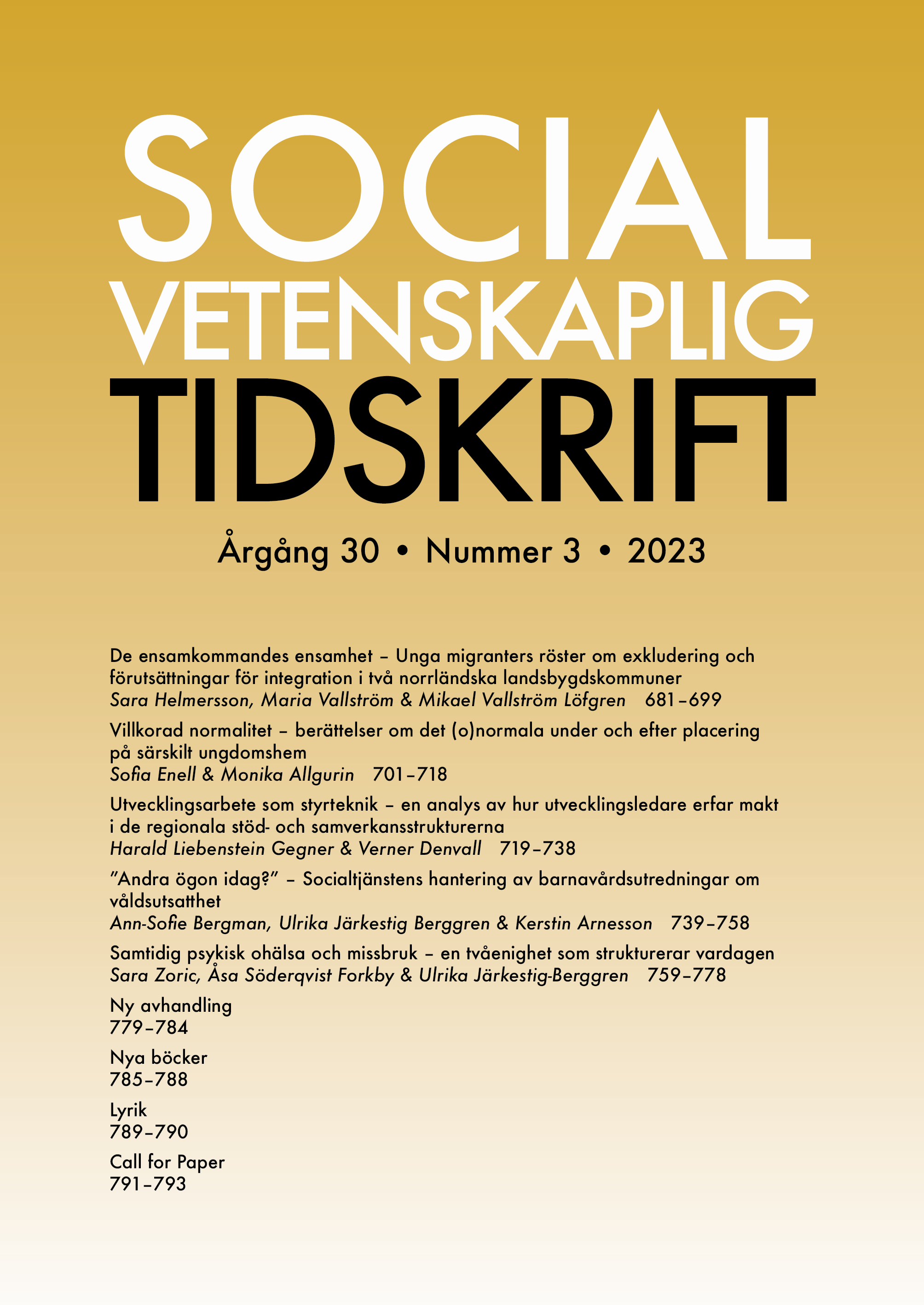Villkorad normalitet
Broken normality. Young adult’s stories of transitioning into adulthood after placement in secure
DOI:
https://doi.org/10.3384/SVT.2023.30.3.4204Keywords:
normality, secure care, young people, young adults, sad tales, relational perspective, institutional practices, longitudinal qualitative researchAbstract
This article follows the stories of transitioning into adulthood told by 11 young people aged 21-26 who almost a decade earlier experienced placement in secure care. The main focus is on explicating a complicated process of navigating through past experiences, building present lives and imaging future. The framework of normality as relationally and contextually construed is applied to deepen the understanding of both the precarious situation of young people after institutional placement and their own agency enacted in building new lives and managing realities of everyday life.
The study is built on follow-up interviews with young people who during the past 10 years have been interviewed on four different occasions. The narrative approach applied in the study approaches stories told by young people as created at the intersection of societal resources and personal experiences providing in this way an insight into individual lives and context which makes such lives possible.
The analysis presented in this article demonstrate three different ways in which young people deal with their past experiences of broken normality in a pursuit of what they see as a normal life. The integration of previous experiences, distancing from the past and breaking relations to others demonstrate three distinct patterns of creating normality. Although different in character, these are underpinned by notable sense of loneliness, lack of social support and a focus on independence exposing in this way the long-lasting effects of institutional placement.
This article emphasizes the importance of supporting structures and relations that could enable young people with experiences of secure care a transition into adulthood and assist them in finding searched-after normality. Importantly, this study is also a vivid reminder that institutional practices of normality creates a feeling of being deviant many years after leaving the institutional walls.
Downloads
Published
How to Cite
Issue
Section
License
Copyright (c) 2023 Sofia Enell, Monika Wilińska

This work is licensed under a Creative Commons Attribution 4.0 International License.
Allt material i Socialvetenskaplig tidskrift publiceras sedan 2022 (Vol 28 Nr 2) med omedelbar öppen tillgång (open access), under Creative Commons-licensen CC BY 4.0. Upphovsrätten till innehållet tillhör respektive författare.
Allt innehåll i tidskriften är fritt tillgängligt utan kostnad och får fritt läsas, laddas ned, kopieras, delas, skrivas ut och länkas. När innehållet används måste författare, källa och licens anges. Författaren kan fritt göra sin publicerade text tillgänglig på institutionella och internetbaserade arkiv, exempelvis sitt lärosätes digitala arkiv eller andra tjänster för detta.
Inga publiceringsavgifter tas ut vid publicering i Socialvetenskaplig tidskrift.


